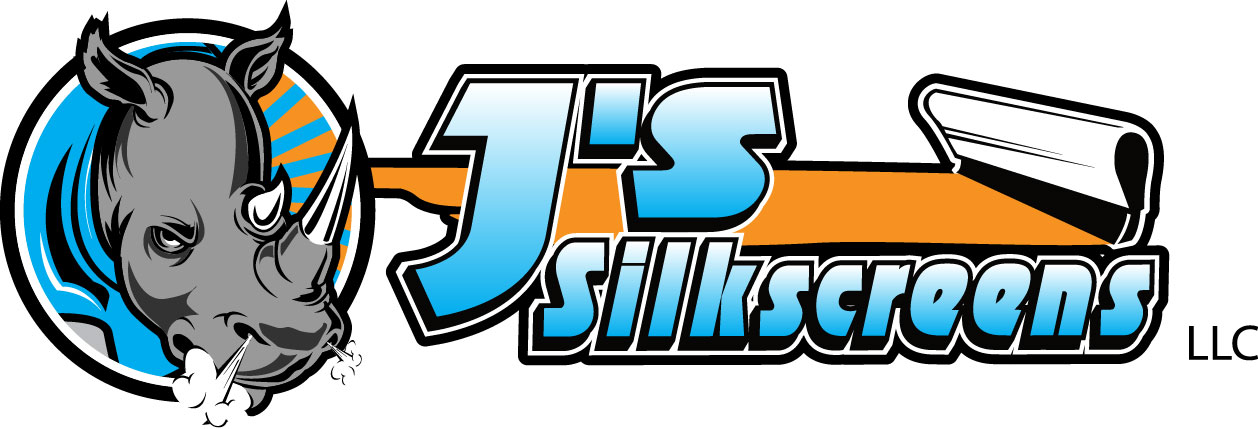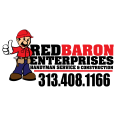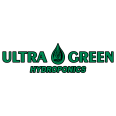When you’re looking for custom clothing to convey your message or elevate your brand, it’s safe to say that quality counts. It doesn’t matter if you’re an entrepreneur with a small business of your very own, a coach with a little league team or the best man in charge of a bachelor party, you want to ensure that you get the very best value for your money. That means not only are the clothes themselves durable and comfortable, it also means that the text or graphic emblazoned upon them shines. It means having full control over the images and colors you use and it means ensuring that the image that appears on your t-shirts, polo shirts and / or hoodies has complete fidelity to the original artwork. This is something that our clients (quite likely) assume of us. Yet, while we endeavor to ensure that they are consistently wowed by the results, we know that they might not be aware of the printing techniques that produce them.
Silkscreen Printing is a technique that goes back centuries. It is a time honored printing technique that delivers great results in large volumes. We have nothing but love for this printing process and the sensational results that it can produce. That’s why we’ve dedicated this post to taking a long look at this fascinating artform which has allowed many a brand to form a cohesive team amongst their employees while getting their call to action heard.
Are you ready? Let’s dive in!
What is Silkscreen Printing?
So, what is Silkscreen Printing? First of all, if you’re vegan the very term Silkscreen Printing might give you pause. This is because vegans do not eat, drink or wear anything that is of animal origin. While many aspects of the screen printing technique have remained the same over the centuries, silk is almost never used in the screen printing process today. Thus, if you are someone who does not wear silk or clothes that were made using silk don’t be put off by the term Silkscreen Printing. It’s merely an homage to the original process which used a silk mesh. Today, however, synthetic polymers such as nylon or polyester are used in lieu of silk.
The technique is as follows:
- A screen made of (usually) polyester or nylon mesh is stretched tightly over a frame.
- A stencil is made by blocking off parts of the screen in a “negative image” of the design you intend to print.
- These are places where the ink will appear on the garment.
- To prepare the screen for printing, an emulsion is “’scooped” across the mesh. When dry it is then exposed to UV light through a film printed with the requisite design.
- This creates a hardening in the emulsion where it has been exposed while the rest of the screen is left soft.
- The soft emulsion is then washed away using a water spray, leaving a clean area in the mesh in the shape of the image which will be printed.
- The fabric to be printed is placed on a surface called a pallet which is coated with tape to prevent ink spillage onto the palette and any future garments which may be placed on it.
- The screen is checked for “pinholes” in the emulsion which may cause unwanted leakage. Tape or “block out” pens are used to prevent this.
- The screen is placed on a firm foundation and a layer of ink is placed on top of the screen. A floodbar (usually made from aluminum) is used to push the ink through the holes in the mesh.
- The printer lifts the screen to prevent contact with the surface beneath. Then they apply a slight amount of pressure to pull the fill bar, which is attached to a reservoir of ink) from the back to the front of the screen. force pulls the fill bar to the front of the screen. This fills the openings in the mesh with ink in the exact shape of the design.
- A rubber blade called a squeegee is then used to push the mesh down towards the surface, squeezing the ink into the garment in a controlled process to ensure nice clean lines and prevent blotting which can ruin the design.
This is Silkscreen Printing in its purest form. Now, of course, the process has become more widely mechanized and many companies that print large quantities of fabrics and garments tend to use automated screen printing presses to achieve faster and more reliable results. However, the principal remains the same and has been used to create high fidelity images for centuries.
Origins of Silkscreen Printing
Silkscreen Printing is a practice that did not receive all that much exposure in the western world until the mid 20th century. Its roots, however, go all the way back to ancient China. The first recognizable examples of Silkscreen Printing go all the way back to the Song Dynasty (960–1279 AD). While knowledge of the technique reached western shores in the late 18th century, it was some time before the techniques were widely embraced? Why? The clue’s right there in the name… Silk.
Silkworms are not found in Europe and are usually found in China, Japan and Korea. It took a long time for silk to become readily available enough in the west for Silkscreen printing to be a worthwhile or profitable enterprise.
In the early 1910s however, new advances in chemical technology began to make the process more viable and by the 1930s Serigraphy (Silkscreen printing as we know it today) was born. As synthetic counterparts were found to replace costly and less abundant silk, screen printing processes became more and more abundant all over the world.
So, now you know more about the Silkscreen Printing process and how it has evolved over the course of centuries. But why do we still continue to use it all these years later? Especially when there are other Direct To Garment Printing options so readily available? We’re glad you asked!
Here are just a few of the reasons why we love this versatile and time honored printing technique…
Benefits and advantages of Silkscreen Printing
While it may be an old printing technique Silkscreen Printing still has a number of advantages, even in the modern era. Let’s take a look at some of the myriad advantages of Silkscreen printing;
- It’s long-lasting and durable- We understand that many of our entrepreneur clients who choose Silkscreen printed tees or polo shirts for their employees need a hard-wearing garment. They don’t want their brand to dull, fade or flake away as time goes by and their employees wear and wash their garments. Because of the composition and thickness of the inks used in Silkscreen Printing, they are much more durable and can withstand more stress without ever losing the quality of the print.
- It produces a great finish with more vibrant colors- There’s nothing more frustrating than seeing a logo or design that looks great on your computer fall short of your expectations when you see it in a finished garment. Silkscreen Printing produces higher fidelity results with more vibrant colors which are hard to replicate using other printing techniques. It also allows for sharper, cleaner lines and more well-defined details.
- It allows for bolder and more eye catching designs- Thicker inks allow for a range of different finishes while also allowing for bolder and more eye catching designs which are visible even from far away. Clients who care about their brand visibility tend to gravitate towards the range of finishes which can be provided with thicker inks.
- It’s versatile and can be done anywhere- The beauty of Silkscreen printing is in its versatility. Printing frames can be made from just about anything from aluminum to MDF and it can be done anywhere with a flat surface. It’s not just for clothing either. Many artists have used this printing process to create transcendent pieces, most notably Andy Warhol.
- It’s simple- The simplest solutions are often the best. Even when Silkscreen printing is automated, it remains a relatively simple and straightforward process that adheres to a single basic principle. The process is simple and the tools are both hardwearing and easy to repair / replace. For this reason, we strongly believe that whatever technological advances we see in our operation the Silkscreen Printing process will remain relatively unchanged and never be relegated to obsolescence.
- It represents great value for money- Finally, Silkscreen printed garments are among the best value for money you can find. Because the printing process is relatively quick and easy this saves us a great deal on labor costs which we can then pass onto our clients. That’s why we’re able to offer such attractive volume discounts on larger orders. We understand that many of our clients run their own businesses and anything that can be done to keep operating costs manageable should be embraced.
Silkscreen Printing vs DTG Printing
So, now that we know a little more about Silkscreen Printing, let’s weigh it up against its most popular competitor DTG or Direct To Garment Printing. DTG Printing prints (as the name suggests) directly onto the garment. There’s no denying that DTG Printing has its own advantages, especially in the past 10 years when technological advances have allowed it to yield higher resolution results comparable to those achieved by screen printing. Advantages include;
- It’s quick and easy to print in full color- Printing directly allows for a full range of colors, whereas screen printing can only allow a single color to be printed with each pressing.
- It’s more accessible and affordable than ever- As with any new technology, DTG printers have become markedly affordable in recent years. This means that DTG printing has become much more cost effective (and competitive) for printing companies.
- It allows for more intricate detailing- DTG printers can produce finer details in many cases than can be achieved with thicker inks used in screen printing.
However, DTG printing has its disadvantages, too. In order to print on dark materials, for instance, a white underlayer usually needs to be added and this can become visible in ways that look less than flattering, especially when the garment is subjected to movement. While DTG printing may allow for more detailed and colorful results, they tend not to be as hard-wearing as those produced by screen printing as the inks are less robust. While you are afforded a wider palette you might find that your colors don’t “pop” as visibly as they do on screen printed garments. What’s more, placement on the garment is more limited and producing in large quantity runs becomes significantly less cost effective than producing garments that use Silkscreen Printing.
So, which is better? Honestly, it depends.
For those who need to replicate an intricate or colorful design in a limited batch, DTG printing may be the most effective solution for you. If, however, you have a simple yet eye catching design that you want to look good on your garments for years to come, the robust inks and reliable process of screen printing will be the better option, especially if you want to order in larger quantities.
What kinds of garments can be made with Silkscreen Printing?
Virtually anything. That’s the beauty of Silkscreen Printing. If it can fit into a frame it can be printed upon. It is commonly used for printing on t-shirts, polo shirts, hoodies and even tote bags. Quite simply, wherever you need to get your message across, screen printing can help you to get it there, affordably and with great, consistent results!
Let our Silkscreen Printed Products bring your brand and your message to life!
If you’re ready to see how SIlkscreen Printed garments can make your brand pop, get in touch with us today. Don’t forget that because we use the same meshes for the same designs over and over again, this generates savings for us which we can pass onto you. Thus, large quantity orders are subject to some extremely generous discounts. Contact us today for a free, zero obligation quote!















